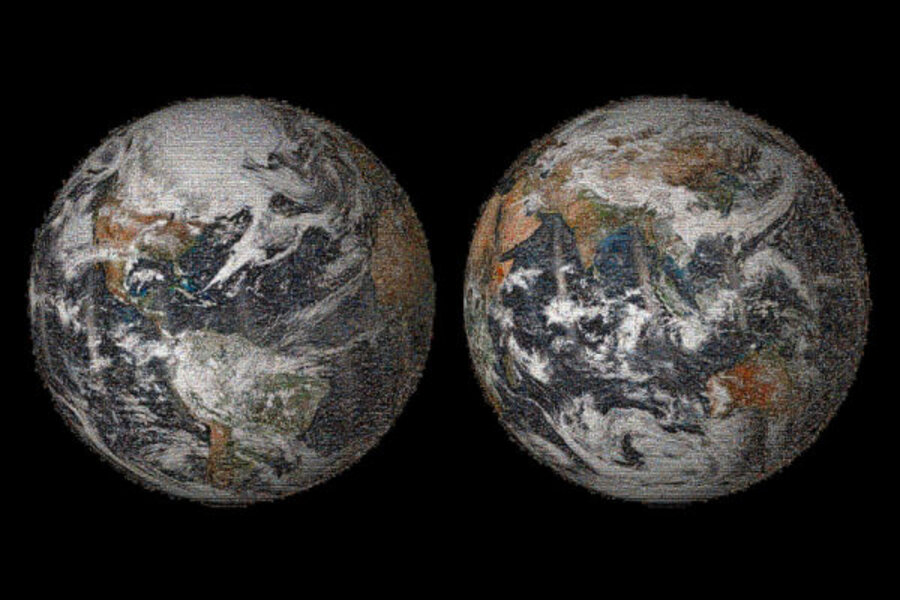NASA reveals 'Global Selfie.' Will image boost interest in space program?
Loading...
It's the shot taken 'round the world.
NASA released the first “Global Selfie” Friday, a composite image of the Earth made up of more than 36,000 "selfie" photographs taken in 113 countries and regions and submitted via social media last month in honor of Earth Day.
The finished product is a 3.2-gigapixel, interactive image that viewers can zoom in on to explore the thousands of individual photos that make up the larger image.
“It’s one small click for whole lot of men and women, one giant piece of computerized collage for NASA,” the Monitor’s Mark Trumbull wrote last month.
As Mr. Trumbull noted, the exercise is more than a bit of selfie fun; it's also part of the space agency's campaign to its reassert its relevance in the face of shrinking federal funding.
NASA has gone to the mat with Congress over budgetary line items for several years now. It is currently considering decommissioning the infrared Spitzer Space Telescope because of lack of funding, Scientific American reported Thursday.
Neil deGrasse Tyson, astrophysicist and host of the revived “Cosmos” television series, has been vocal about the role that the federal space program plays, not only in expanding collective understanding of the universe, but also in inspiring young people to become scientists and to explore the unknown.
In December, a 6-year-old would-be astronaut from Denver launched an online petition urging Congress to restore NASA’s budget, "so we can discover new worlds, protect us from danger and to make dreams come true," the Atlantic reported. Although the petition did not accumulate enough signatures to prompt a White House response, it succeeded in bringing attention to NASA funding levels.
For its part, NASA has launched a full-throttle social media campaign designed to remind the American public just how cool its work is.
In the past year or so, the space agency has emerged as one of the US government’s most socially engaged institutions, with multiple Twitter, Facebook, Instagram, and Google+ accounts. Last year, millions of viewers tuned into NASA’s YouTube channel to watch astronaut Karen Nyberg demonstrate how to shampoo hair in space and see astronaut Chris Hadfield's cover of David Bowie’s “Space Oddity” from the International Space Station.
The Global Selfie project is one more effort to boost the space agency's public image, not just in the United States, but also around the world. Given the massive response from all corners of the globe, it seems that citizens of Earth are eager to be included in NASA’s planetary vision.
Here are a sampling of some of the worldwide submissions.








